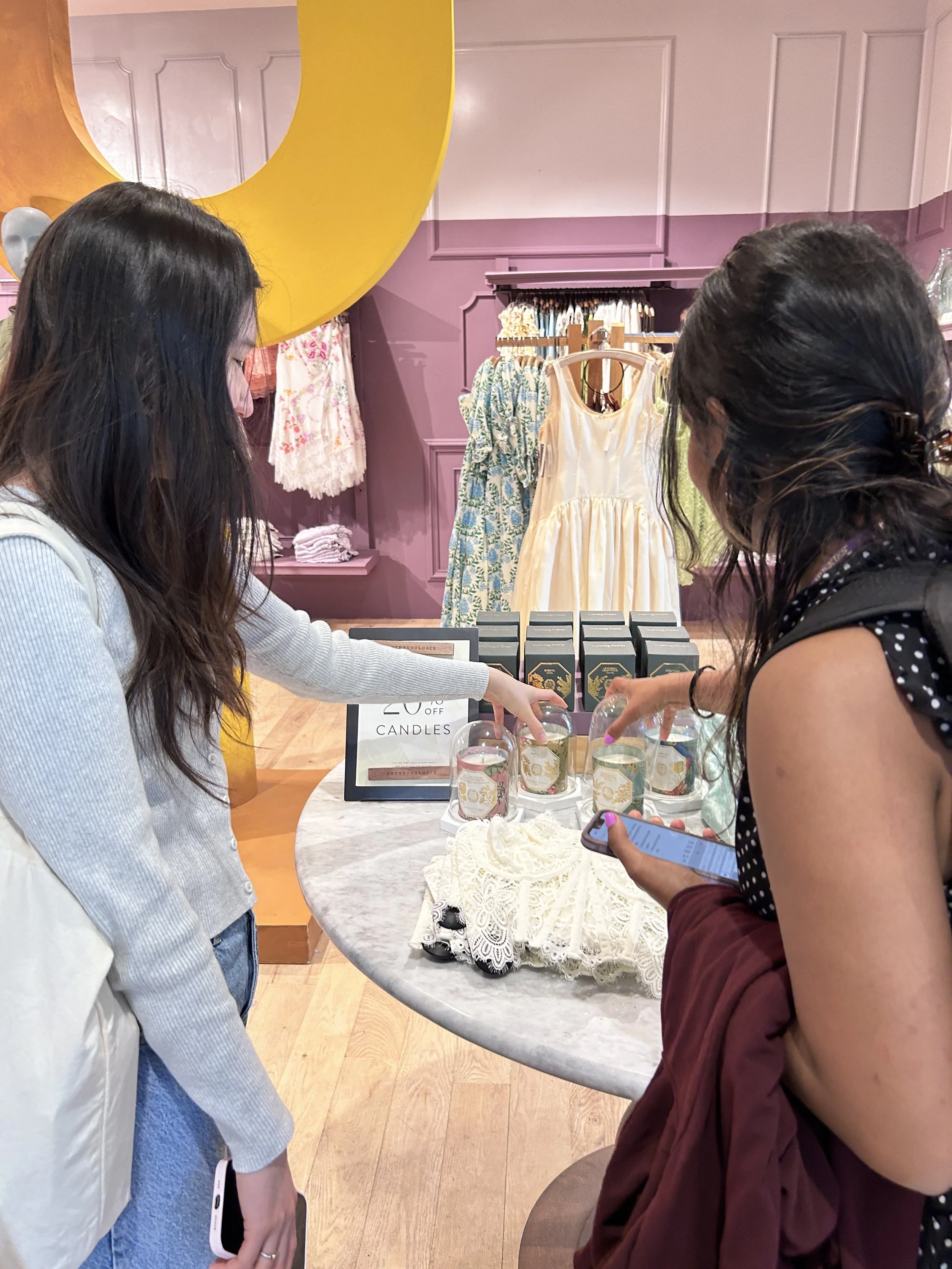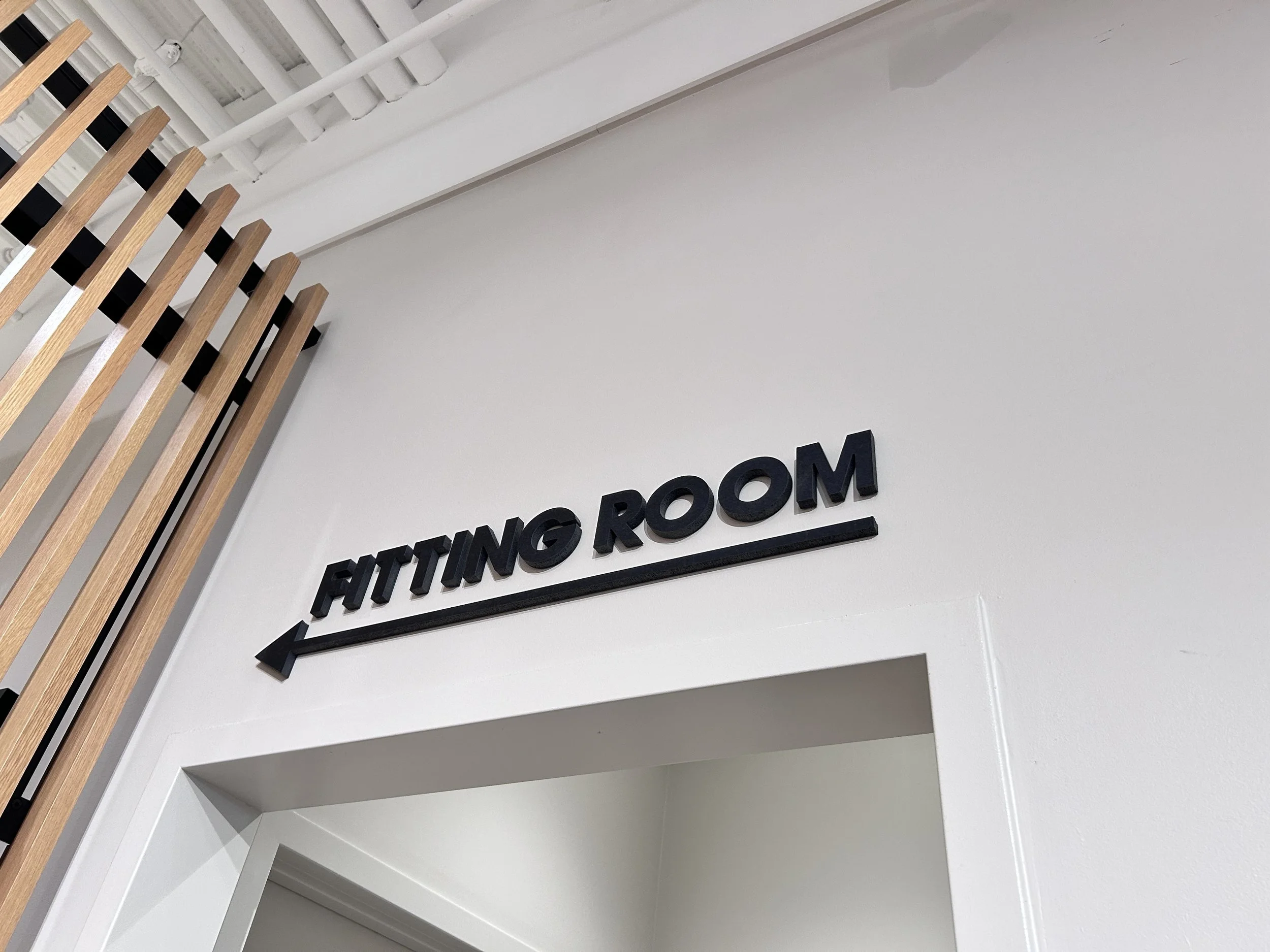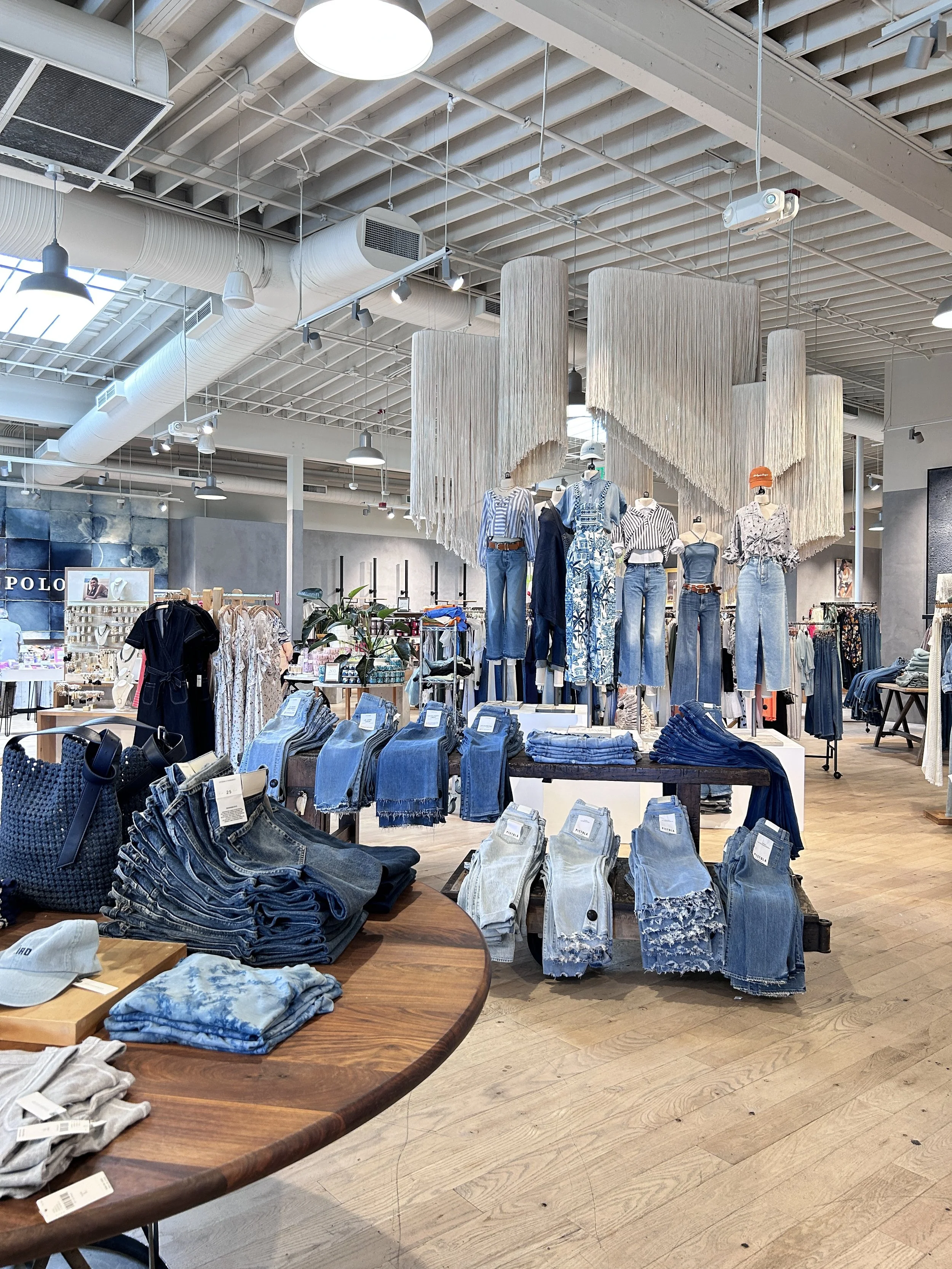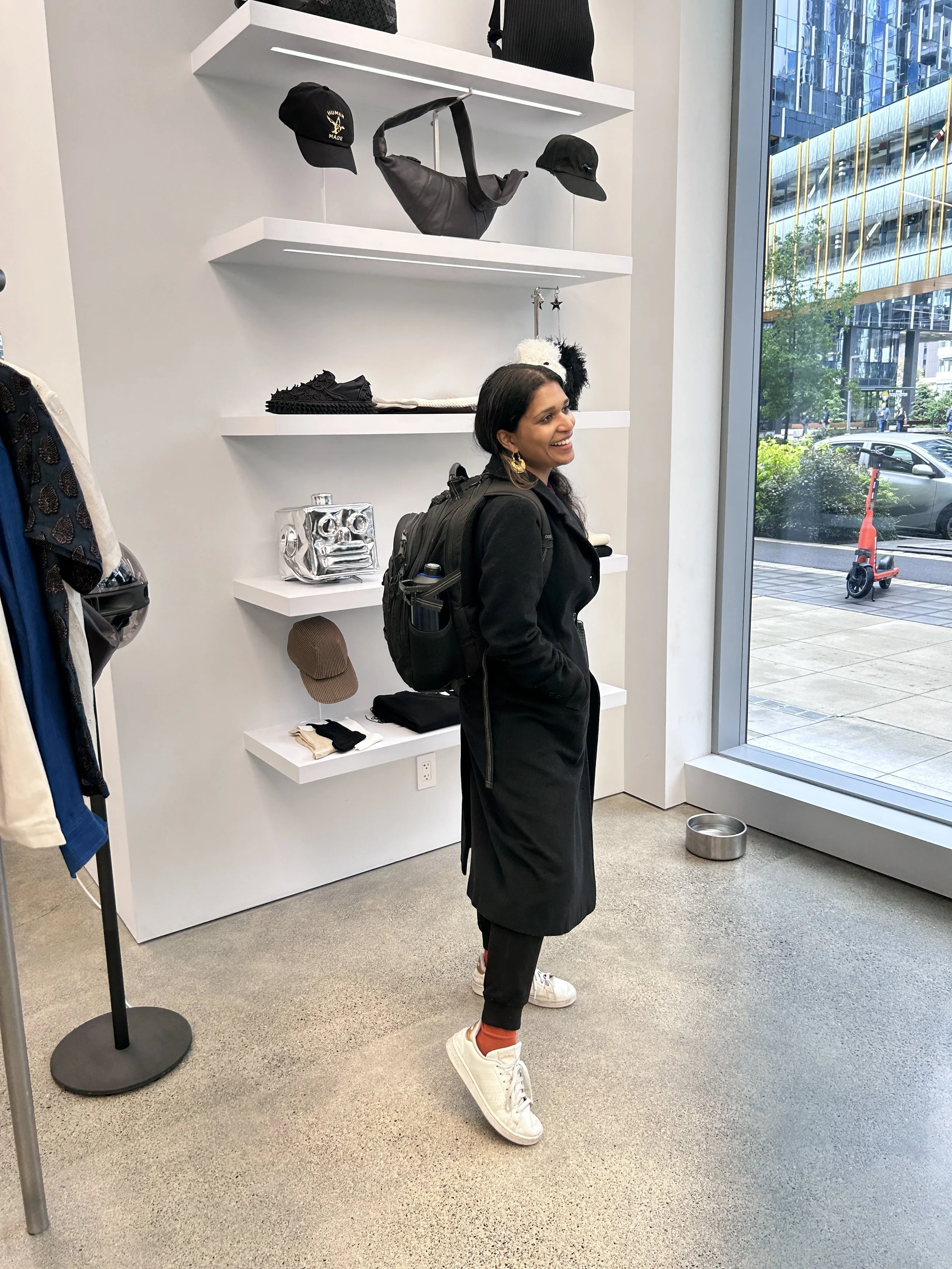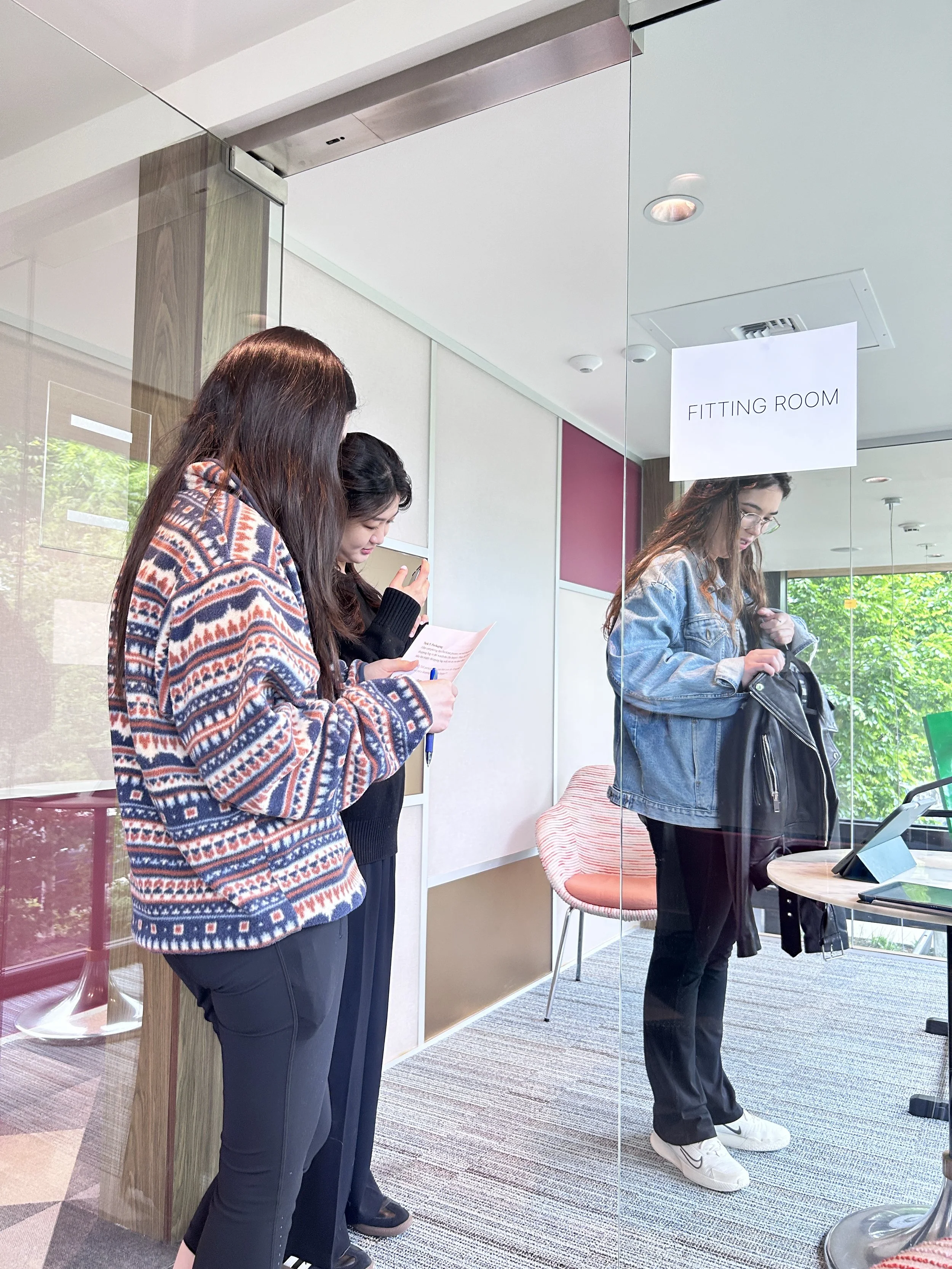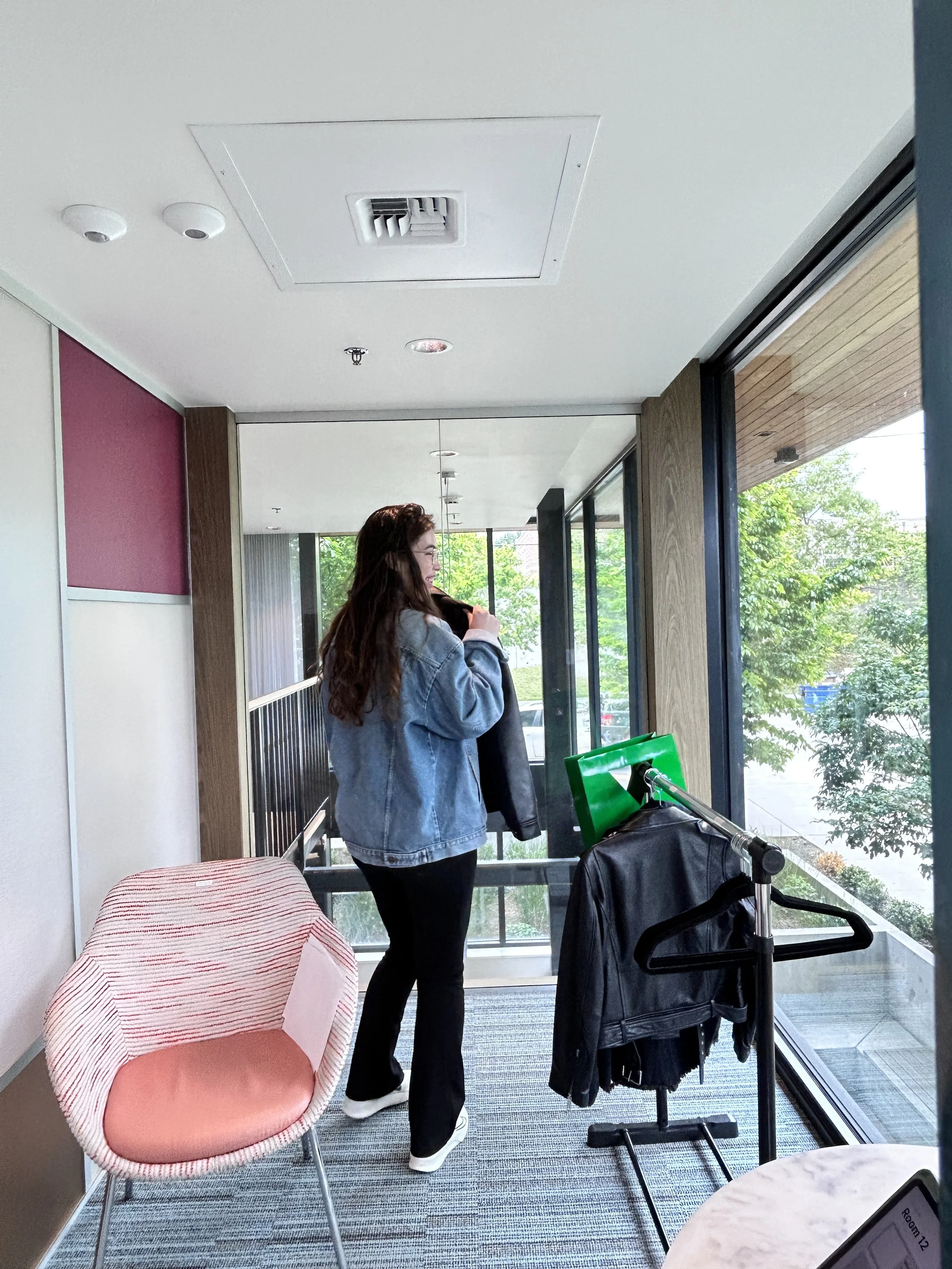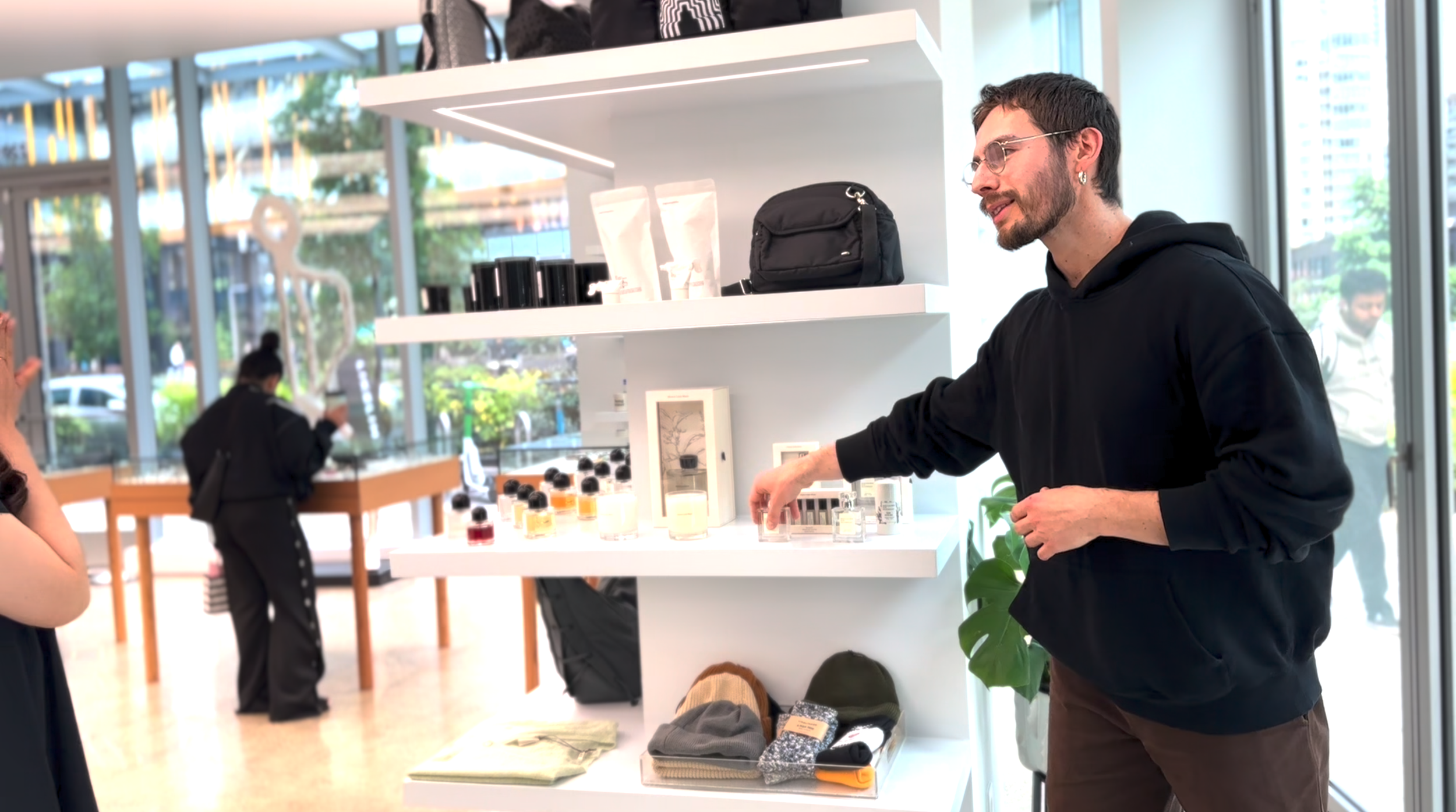Basel
Basel bridges digital and physical shopping experiences by allowing customers to choose their clothes online and try them in-store.
We propose a self-guided shopping experience that empowers, delights, and invites self-reflection.
PROJECT BRIEF
I Contributed to the Project by
Driving Ideation Through Research:
Provided research-backed ideas when team ideation stalled
Leading Experience Prototyping:
Collected and applied feedback to finalize the design
Refining User Personas:
Synthesized evaluation results to align our team on critical improvement areas
Creating a Video to Demonstrate Experience Design:
Created a keypath video to effectively illustrate the details of the customer journey
My Role
Service Designer
UX Researcher
Video Editor
Time
April - June, 2024
Duration
5 Weeks
Tools
Figma
Team
Tanushree Padath
Roman Meza
Annie Song
Jiho Kim
IMPACTS
HMW STATEMENT
When we are done with our project, our customers will be able to seamlessly integrate the convenience of online shopping with the tactile joy of in-store experiences. Therefore, our HMW statement eventually landed on:
“How might we redesign the clothing try-on experience to balance empowerment, pleasure, and self-reflection?”
RESEARCH
As we explored this question for five weeks, our design process included several rounds of ideation and selection, guided by multi-method field research inspired by IDEO’s research methods.
Design process Overview
Field Research Methods
Key Findings From Field Research
From these sources, we compiled findings about both customers and staff. Since the needs of each user segment are different, we have separated the findings of each:
Customer
01 The limitations of online shopping, such as not being able to feel fabrics or see drapes, make in-person try-on experiences attractive to customers.
02 Customers desire balanced visual stimuli when shopping in person, avoiding places that over-stimulate their senses.
03 The experience of trying on clothes in a fitting room, due to factors like lighting and inaccurate mirror reflections, may not perfectly translate to how the clothes look at home, leading to returns.
04 Few customers preferred a door to a curtain in the fitting room.
Staff
01 Staff like to offer one-on-one assistance to customers whenever time permits.
02 Many people seek affirmation for their choices.
Staff also enjoy providing encouragement and boosting people's confidence.
03 Staff are unsure when their services are perceived as intrusive instead of welcomed.
04 In high-touch experiences, limited fitting rooms can cause long wait times, adding stress to both customers and staff.
IDEATE
Redesigning Clothing Try-On Experiences through Structured Brainstorming
To innovate the try-on process, we implemented seven rules of brainstorming. During the affinity mapping phase, our ideas were then categorized into themes, such as the personal shopper concept, temporary fitting areas, sizing beacons, wish lists, themed sections, and interactive mirrors.
✨WHAT INFLUENCED OUR DECISIONS?
Field Research:
We immersed ourselves in the environment and observed the stakeholders for whom we were designing. Our process included conducting field studies, utilizing affinity mapping, and implementing two rounds of voting. This helped us narrow the 20 initial ideas down to 10 ideas.
Personas and Storytelling:
We developed personas and crafted stories for our top 10 ideas, which helped us narrow the selection to 5 based on the strength of these narratives. For each of the final 5 ideas, we created a detailed story illustrating the intended experience through specific scenarios.
Design Principles:
Building on our user research findings, we formulated five key design principles.
The solution will
+ feel efficient and joyful
+ prioritize sustainability for a healthy planet
+ elicit a deeper connection to the product story
+ foster confidence through self-reflection
+ encourage product retention
Using these, we voted on our final concept, "Artful Installation," which integrates features such as a wishlist and the help button, drawing from other explored ideas.
However, at this point, we haven’t settled on any promising idea, as all the ideas lacked innovative potential as standalone projects, leading us to the most challenging moment.
🔥CHALLENGING MOMENT
After receiving feedback from an expert, we encountered a roadblock due to perceived innovation deficits in our process.
“The art gallery theme is somewhat interesting but needs to be fleshed out. Right now, high-end fashion shopping is already very much like you’re describing.”
-Jacob O. Wobbrock, Professor
In response, I researched online discussions and conducted informal interviews over a weekend to identify user pain points in dressing experiences. This led to a team consensus on developing a self-guided fitting experience, transforming the store with a tablet-based selection system, and significantly enhancing our service design.
PROTOTYPE EVALUATION
Designing an Immersive Retail Experience Prototype
We used the CX Journey Mapping Canvas to map key aspects of the customer journey, guiding our experience prototype development.
Next, we built the prototype in an apartment lounge marking areas like check-in and fitting room. Participants explored two scenarios, performing tasks to navigate each scenario.
The prompt:
Basel is a small clothing boutique in Seattle that offers a unique fitting room-only experience, completely self-guided with no staff interaction. After seeing it on your friend Joho's Instagram story, you decide to visit.
Evaluation Process & Key Takeaways
3 participants
Experience Prototype:
Apartment’s lounge space
Existing props
Lo-fi mockups
Role-playing & Imagination!
Post-Test Q&A Session
🙆🏻♀️ What Worked:
Self-directed experience
Magic closet feature
🙅🏻♂️ Room for Improvement:
Walk-out checkout experience
Complete lack of human interaction
⚙️ Implications:
Consider abandoning the walk-out checkout in favor of incorporating elements of human interaction, such as the introduction of style curators.
After the evaluation, our team felt disorganized, as each participant had differing opinions, and some issues seemed relatively minor. To clarify our direction, I proposed using personas to better visualize our potential user’s motivations and challenges. I also saw this as a valuable tool for internal alignment.
Synthesized Evaluation to Develop Persona

FINAL DESIGN
By integrating design thinking, we aligned human desirability with technological feasibility and economic viability. Using Lean Canvas, we analyzed our company's unique value proposition and revenue streams. Our focus is not just on solving shopping problems but on offering customers the choice between self-guided and assisted shopping experiences. This autonomy enhances their immersive experience, helping them better understand themselves through the act of trying on clothes.
Sources: IDEO What is Design Thinking?

VIDEO-Meet Basel

ITERATION
Try-on Selection
By using Basel, customers can pre-select items online to try on in-store, bridging the gap between digital browsing and physical shopping.
①
Changed the language from "Bag" to "Try" to bridge the gulf of evaluation
②
Added vertical spacing between listings to allow the eye to breathe
③
Streamlined the Try-On section by removing the “Add (+) piece” hints and updating the wording for clarity
Creating an Appointment
The app facilitates appointments in private fitting rooms, inviting self-reflection and allowing customers to consider their personal style and preferences in a serene environment.
①
Abandon the walk-out checkout experience that requires early user commitment
②
Replaced the Apple Pay checkout process with a simpler system that collects basic customer information, such as name and email
“It doesn't feel simple it feels less secure because just like no dedicated staff to tap our credit card or a chance to see the return policy.“
— Participant 1
“I don't know what the difference was for the wishlist it is just like a shop. I didn't know what the difference was between the wish list and check out.“
— Participant 2
Self-guided Try-on
(Tablet in fitting Room)
The self-guided shopping experience not only empowers customers by giving them control over their choices but also enhances the pleasure of shopping through personal and tactile interaction with products.
①
Restructured the content hierarchy to prioritize customer needs
②
Eliminated the fitting room self-checkout feature to encourage human interaction
③
Introduced new features tailored to user preferences, including temperature control, default music options, and lighting selections
“I like that nobody is bothering me in the shopping experience because I have really bad social anxiety. If someone's asking me questions when I want to try something on, my people-pleasing skills come out.”
— Participant 2
“Are you gonna lock me inside the fitting room if I don’t pay?
If it was not explained to me, I would feel confused about it.”
— Participant 3
Style Curator
Introduced an in-store style curator to provide personalized assistance, empowering users to seek one-on-one help whenever desired.
“Maybe it’s nice to have someone on hand if I have any questions...so I think there’s still be a human component.“
— Participant 2
REFLECTIONS
Human touch and meaningful interactions remain crucial for engaging shopping experiences.
Even brief field observations and user testing provide valuable real-world insights.
Creating a better experience isn't just about improving existing services; it's about breaking out of the current frame, focusing on the customer experience, combining resources, and viewing the system holistically.
What I learned

